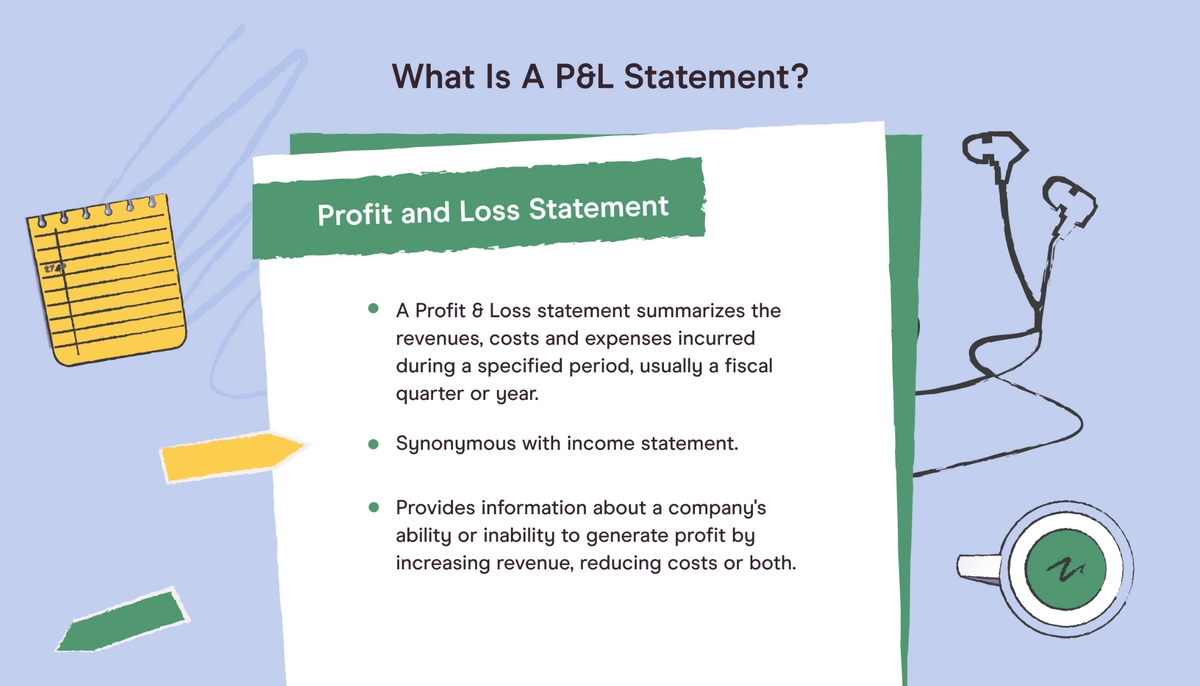Home>Finance>Why Would Liquid Assets Not Be Listed In A Will


Finance
Why Would Liquid Assets Not Be Listed In A Will
Modified: January 15, 2024
Explore the importance of listing liquid assets in your will and the potential reasons why they may be overlooked. Enhance your financial planning with expert advice.
(Many of the links in this article redirect to a specific reviewed product. Your purchase of these products through affiliate links helps to generate commission for LiveWell, at no extra cost. Learn more)
Table of Contents
Introduction
When it comes to estate planning, one of the key documents is a Will. A Will is a legal document that outlines how a person’s assets should be distributed after their death. While Wills typically cover a wide range of assets, including real estate, investments, and personal belongings, there may be instances where liquid assets are not listed in a Will.
Liquid assets refer to assets that can be easily converted to cash, such as bank accounts, stocks, bonds, and mutual funds. While it may seem counterintuitive to exclude these assets from a Will, there are various reasons as to why this might be the case.
In this article, we will explore the potential reasons why liquid assets may not be listed in a Will. We will also consider the alternative methods available for transferring these assets and the potential implications for the executor and beneficiaries. It is important to note that the following information is for general guidance purposes only, and it is always recommended to consult with a professional advisor or attorney for specific legal advice related to estate planning.
Definition of Liquid Assets
Before delving into why liquid assets may not be listed in a Will, it is crucial to have a clear understanding of what is meant by “liquid assets.
Liquid assets are assets that can be easily converted into cash without a significant loss in value. These assets are typically held in the form of cash, bank deposits, or investments that have a high level of liquidity, such as stocks, bonds, and mutual funds.
Cash is the most readily available form of liquid asset, as it can be used for immediate transactions or stored in bank accounts. Bank deposits, such as savings accounts or certificates of deposit (CDs), also fall into the category of liquid assets, as they can be withdrawn or accessed with relative ease.
In addition to cash and bank deposits, investments that can be easily bought or sold on the open market are considered liquid assets. These include stocks, bonds, and mutual funds, which can be converted into cash quickly without causing a significant impact on their value.
It is important to note that while liquid assets are easily accessible, their value can fluctuate depending on market conditions. In some cases, the value of an individual’s liquid assets may be significantly higher than their tangible assets, such as real estate or personal property.
Now that we have a clear understanding of what liquid assets are, let us explore why these assets may not be included in a Will.
Purpose of a Will
Before we discuss why liquid assets may not be listed in a Will, it is important to understand the primary purpose of a Will in estate planning.
A Will serves as a legal document that allows an individual, referred to as the testator, to specify how their assets should be distributed after their death. It provides clarity and ensures that the testator’s wishes are carried out as per their instructions.
The key purposes of a Will include:
1. Asset Distribution: The primary purpose of a Will is to outline how the testator’s assets, including property, investments, and personal belongings, should be distributed among their beneficiaries. This provides a clear roadmap for the executor of the estate and helps avoid conflicts and uncertainties regarding asset distribution.
2. Guardianship: A Will allows the testator to designate a guardian for any minor children or dependents they may have. This ensures that the testator’s children will be taken care of by someone they trust in the event of their untimely demise.
3. Executor Appointment: A Will appoints an executor, someone responsible for managing the testator’s estate and ensuring the proper distribution of assets. The executor is legally obligated to carry out the instructions outlined in the Will.
4. Tax Planning: A Will can also incorporate tax planning strategies to minimize the tax burden on the estate, ensuring that more assets can be transferred to the beneficiaries.
5. Charitable Contributions: Some individuals choose to include charitable bequests in their Will, directing a portion of their assets to charitable organizations or causes they support.
By outlining these purposes, it becomes clear that a Will plays a critical role in ensuring that the testator’s intentions are honored and their assets are distributed as they desire. However, there may be situations where liquid assets are not explicitly listed in a Will, which we will explore further in the following sections.
Assets Included in a Will
When creating a Will, individuals typically include a comprehensive list of their assets to ensure a smooth transfer of their estate. Here are some common assets that are typically included in a Will:
1. Real Estate: This includes any properties owned by the testator, such as houses, land, or commercial buildings.
2. Personal Belongings: Personal belongings, such as jewelry, artwork, furniture, and vehicles, are often specifically mentioned in a Will to designate who will inherit them.
3. Financial Accounts: Bank accounts, including checking and savings accounts, are commonly included in a Will. This ensures that the funds held in these accounts will be distributed according to the testator’s wishes.
4. Investments: Stocks, bonds, mutual funds, and other investment accounts are often included in a Will. This allows the testator to specify how they want these assets to be distributed among their beneficiaries.
5. Life Insurance Policies: If the testator owns life insurance policies, they can designate the beneficiaries of these policies in their Will.
6. Retirement Accounts: Retirement accounts, such as 401(k)s, IRAs, or pension plans, can be included in a Will to determine how these funds are distributed upon the testator’s death.
7. Business Interests: If the testator owns a business or has a significant stake in a company, they may choose to include these business interests in their Will.
It is essential to provide detailed information about these assets in the Will, including account numbers, ownership details, and any specific instructions regarding their distribution. Including comprehensive information helps the executor of the estate accurately transfer the assets to the intended beneficiaries.
While these are some of the typical assets included in a Will, it is crucial to consult with a professional advisor or attorney to ensure that all relevant assets are properly accounted for and included in the Will. Now that we understand the assets typically included in a Will, let us explore why liquid assets may be excluded from a Will.
Reasons for Excluding Liquid Assets from a Will
While it is common for a Will to encompass a wide range of assets, including real estate, personal belongings, and financial accounts, there are several reasons why testators may choose to exclude liquid assets from their Will. Here are a few possible reasons:
1. Joint Ownership: One common reason for excluding liquid assets from a Will is if the assets are held jointly with another individual. In joint ownership, the assets automatically pass to the surviving owner upon the testator’s death, bypassing the need for distribution through a Will. For example, if a testator holds a joint bank account with their spouse, the account balance will transfer to the spouse outside of the Will.
2. Designated Beneficiaries: Many liquid assets, such as life insurance policies, retirement plans, and investment accounts, allow for the designation of beneficiaries. When a beneficiary is named, these assets are transferred directly to the designated person upon the testator’s death and are not subject to the terms of the Will. By excluding these assets from the Will, the testator ensures a streamlined distribution process without involving the executor or the probate court.
3. Trusts: Testators may choose to create trusts to hold and distribute their liquid assets. A trust allows for the transfer of assets to a designated trustee, who manages and distributes the assets according to the testator’s instructions. By using a trust, the testator can have more control over how their liquid assets are distributed and provide for specific conditions, such as staggered distributions or ongoing management for beneficiaries who may not be able to handle large sums of money at once.
4. Privacy and Avoiding Probate: Liquid assets that pass through a Will must go through the probate process, which can be time-consuming and costly. Some testators prefer to keep the details of their liquid assets private and avoid the probate process altogether. By utilizing joint ownership, beneficiary designations, or trusts, testators can ensure a more efficient and private distribution of their liquid assets.
5. Changing Nature of Assets: Liquid assets can be more volatile and subject to frequent changes compared to other types of assets, such as real estate. The testator may feel that listing specific liquid assets in their Will may create complications or require frequent updates. Instead, they may prefer to leave their liquid assets to the discretion of the executor or direct them towards the trust or beneficiary designations.
It is important to note that the decision to exclude liquid assets from a Will should be made after careful consideration and in consultation with a professional advisor or attorney. Each individual’s situation may vary, and it is essential to ensure that the chosen approach aligns with their overall estate planning goals.
Alternative Methods of Transferring Liquid Assets
While testators may choose to exclude liquid assets from their Will, there are alternative methods available for transferring these assets to their intended beneficiaries. Here are some commonly used alternatives:
1. Beneficiary Designations: Many types of liquid assets, such as life insurance policies, retirement accounts, and certain financial accounts, allow for the designation of beneficiaries. By completing the necessary beneficiary designation forms, the testator can specify who will receive these assets upon their death. This method bypasses the need for probate and ensures a direct transfer to the designated beneficiaries.
2. Joint Ownership: Holding liquid assets jointly with another individual, such as a spouse or family member, can facilitate the transfer of these assets outside of a Will. When one joint owner passes away, the ownership of the assets automatically transfers to the surviving owner(s). This approach can provide a seamless transfer of liquid assets and avoid the probate process.
3. Payable-on-Death (POD) or Transfer-on-Death (TOD) Designations: Some financial accounts, such as bank accounts or brokerage accounts, offer the option of designating a payable-on-death or transfer-on-death beneficiary. By completing the necessary paperwork, the testator can specify who will receive the funds in these accounts upon their death. Similar to beneficiary designations, this method ensures a direct transfer of liquid assets to the named beneficiary without the need for probate.
4. Revocable Living Trust: Creating a revocable living trust allows the testator to transfer their liquid assets to the trust during their lifetime. They can then designate themselves as the trustee and maintain control of the assets. Upon their death, a successor trustee takes over and distributes the assets to the named beneficiaries according to the terms of the trust. This method provides flexibility, privacy, and the potential for ongoing management of assets.
5. Gifting: Another alternative is for the testator to gift their liquid assets to their intended beneficiaries during their lifetime. By following the guidelines set forth by tax laws, the testator can reduce the size of their estate and potentially minimize estate taxes. However, it is important to consider any gift tax implications and consult with a tax advisor before proceeding with this option.
Each of these alternative methods has its advantages and considerations. It is crucial to consult with a professional advisor or attorney to evaluate the best approach based on your specific circumstances and goals. Proper documentation and coordination with financial institutions and legal professionals are essential to ensure that the transfer of liquid assets is carried out smoothly and in accordance with your wishes.
Considerations for the Executor and Beneficiaries
When liquid assets are excluded from a Will and instead transferred through alternative methods, there are several considerations for both the executor of the estate and the beneficiaries involved. Here are some important factors to keep in mind:
For the Executor:
1. Understanding the Testator’s Intentions: The executor must have a clear understanding of the testator’s wishes regarding the distribution of liquid assets. This requires thorough communication with the testator during their lifetime or consulting the relevant legal documents to ensure that the assets are transferred according to the testator’s intent.
2. Coordinating with Financial Institutions: The executor may need to liaise with financial institutions to facilitate the transfer of liquid assets to the designated beneficiaries. This involves providing necessary documentation, such as death certificates or trust agreements, to initiate the transfer process smoothly.
3. Tracking and Monitoring: The executor is responsible for tracking and monitoring the transfer of liquid assets to ensure that they reach the intended recipients. This may involve staying updated on account balances, coordinating disbursements, and maintaining accurate records of the asset transfer process.
4. Accounting for Tax Implications: The executor should be mindful of tax obligations related to the transfer of liquid assets. Depending on the jurisdiction and the specific assets involved, there may be potential estate or inheritance tax considerations that need to be addressed.
For the Beneficiaries:
1. Awareness of the Asset Transfer Method: Beneficiaries should be informed about alternative methods of asset transfer, particularly if liquid assets are excluded from the Will. Understanding how the assets will be distributed and the timeline for receiving them can help avoid confusion or disputes.
2. Potential Timelines and Delays: Depending on the chosen transfer method, there may be varying timelines for beneficiaries to receive their share of the liquid assets. For example, assets transferring through a trust may be subject to certain conditions or staggered distributions. Beneficiaries should be prepared for any potential delays and should be aware of the expected timeline for the transfer.
3. Individual Tax Implications: Beneficiaries should consider the potential tax implications associated with receiving liquid assets. Depending on their country’s tax laws, they may be subject to income tax or capital gains tax if they receive assets that have appreciated in value. It is advisable for beneficiaries to consult with a tax professional to understand their specific tax obligations.
4. Communication with the Executor: Beneficiaries should maintain open lines of communication with the executor to stay informed about the progress of the asset transfer process. Regular updates from the executor can help alleviate any concerns and ensure transparency throughout the distribution process.
It is crucial for both the executor and beneficiaries to work together harmoniously to ensure a smooth transfer of liquid assets. Consulting with legal and financial professionals can provide valuable guidance and support throughout the process, helping to navigate potential complexities and legal obligations.
Potential Challenges and Legal Implications
While excluding liquid assets from a Will and transferring them through alternative methods can offer flexibility and efficiency, there are potential challenges and legal implications to be aware of. Here are some considerations:
1. Disputes and Contestations: Excluding liquid assets from a Will may increase the risk of disputes among potential beneficiaries. Disgruntled family members or individuals who believe they were wrongfully excluded may contest the transfer of assets, leading to legal battles and delays in distributing the assets.
2. Inadequate Documentation: It is crucial to ensure that all necessary documentation, such as beneficiary designations, trust agreements, or joint ownership records, are accurately maintained and updated. Inadequate or outdated documentation can lead to confusion, disputes, or unintended outcomes during the asset transfer process.
3. Tax Implications: Transferring liquid assets through alternative methods may have tax implications for both the estate and the beneficiaries. Depending on the jurisdiction and the specific assets involved, there may be estate or inheritance tax considerations to address. It is important to consult with tax professionals or attorneys to ensure compliance with applicable tax laws.
4. Complex Estate Planning: Excluding liquid assets from a Will and utilizing alternative methods for transfer may involve more complex estate planning strategies. Setting up trusts, coordinating beneficiary designations, and managing joint ownership arrangements require careful consideration and documentation. It is advisable to work with experienced professionals to navigate the intricacies of these strategies and ensure compliance with legal requirements.
5. Changing Financial and Personal Circumstances: Circumstances change over time. Beneficiary designations and joint ownership arrangements might need to be updated to reflect significant life events, such as marriage, divorce, the birth of children, or the death of a designated beneficiary. Regularly reviewing and updating these arrangements is essential to ensure that the testator’s intentions are upheld and to avoid potential challenges or unintended consequences.
6. Privacy Concerns: Excluding liquid assets from a Will and utilizing alternative transfer methods may compromise privacy. Certain asset transfers, such as designating beneficiaries or holding assets jointly, may be publicly accessible information. For individuals concerned about privacy, additional steps, such as establishing trusts, may be necessary to maintain confidentiality and protect sensitive financial information.
It is crucial to work closely with experienced legal and financial professionals to navigate these potential challenges and mitigate any legal implications. These professionals can provide guidance, help create a comprehensive estate plan, and ensure compliance with applicable laws and regulations.
Conclusion
In conclusion, while liquid assets are typically included in a Will, there are various reasons why they may be excluded from this legal document. Common alternative methods for transferring liquid assets include beneficiary designations, joint ownership, payable-on-death or transfer-on-death designations, and the use of trusts. These methods offer flexibility, efficiency, and the potential for avoiding the probate process.
However, it is essential to carefully consider the potential challenges and legal implications associated with excluding liquid assets from a Will. Disputes, inadequate documentation, tax implications, complex estate planning, changing circumstances, and privacy concerns are all factors that need to be addressed and navigated.
Consulting with professional advisors, such as attorneys, tax professionals, and financial planners, is crucial to ensure that the chosen transfer methods align with the testator’s intentions and comply with applicable laws. These professionals can provide valuable guidance, assist in creating a comprehensive estate plan, and help mitigate potential legal risks.
Ultimately, the decision to exclude or include liquid assets in a Will depends on individual circumstances and goals. It is important to carefully evaluate the specific assets, consider the potential implications for both the executor and beneficiaries, and seek professional advice to make informed choices.
In the realm of estate planning, it is always advisable to consult with professionals and regularly review and update legal documents to reflect any changes in personal or financial circumstances. By doing so, individuals can ensure that their wishes are properly communicated and their assets efficiently transferred to their intended beneficiaries.














